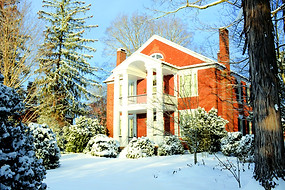Historic Homes
It's hard to believe that Lexington wasn’t built by professional architects and contractors. Our architecture is mostly vernacular— that is, reflecting the skills, traditions and materials familiar to local craftsmen.
Historic Lexington Foundation began by leading the charge in 1966 to save one home, Beaumont, and ever since then, preserving and protecting the area's stately residences is always on our mind.
At first, we bought deteriorating homes, shored them up and gave them cosmetic makeovers in order to sell them, usually by pre-arrangement, to buyers who were eager to accept permanent preservation easements.
In recent years, private owners have become keen to ensure that their homes will always retain their historical distinction, and HLF now focuses more on providing rehabilitation and restoration grants; facilitating easements and similar legal protections; and encouraging and publicly heralding the accomplishments of owners.
Our donors and volunteers are zealous about protecting the character of our residential communities. Here, thanks to them, are some of our accomplishments.




Beaumont (Barclay House), c. 1824, Lee Avenue. An imminent threat of demolition in 1966 spurred formation of Historic Lexington Foundation.
The Hopkins House, c. 1845, West Washington Street. It was donated to HLF, and we returned it to the private sector with exterior and interior easements.
Jacob Ruff House, c. 1829, North Main Street. We acquired it, stabilized it and returned it to the private sector with perpetual easements attached.


Reid-White-Philbin House, 1821. HLF added easements in our early days. The house was later donated to HLF, and we returned it to the private sector.

The Lexington Presbyterian Manse, 1848, now privately owned. It carries HLF protective easements inside and out.


Roberson-Phelan House, c. 1845, was in dire condition when HLF acquired it in 2007 and carried out a gut renovation. It is now privately owned.


